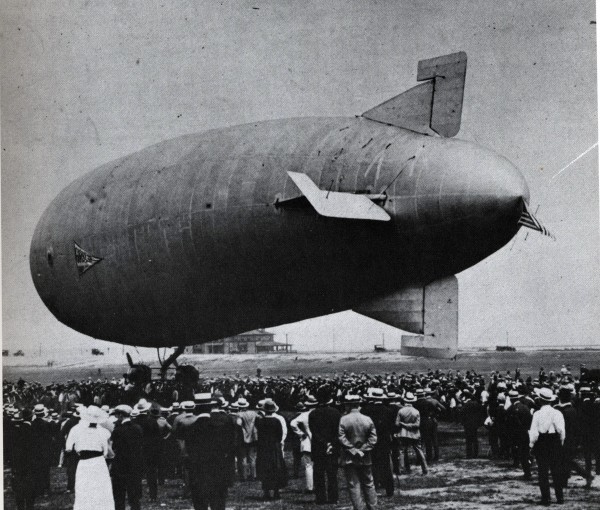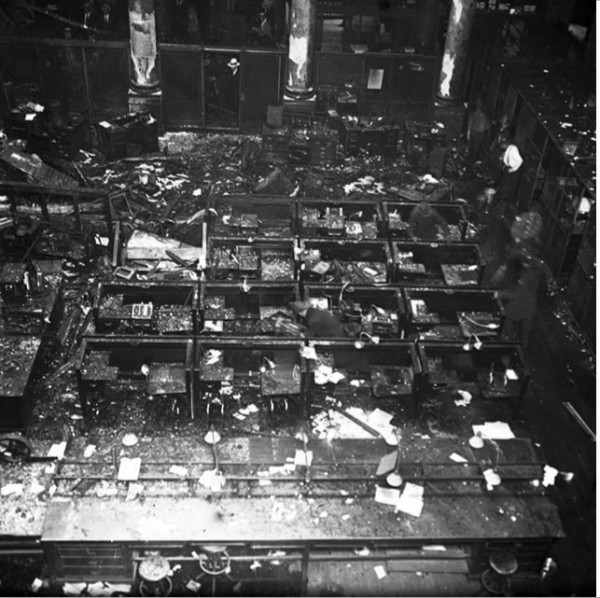Some twenty years prior to the Hindenburg, Chicago had its own airship disaster. Thirteen people were killed and twenty-six were injured when the Wingfoot Air Express dirigible crashed into the Illinois Trust and Savings Building.
On July 21, 1919, the Wingfoot made three runs from the White City amusement park in the Woodlawn and Greater Grand Crossing communities up to Grant Park. Pilot Jack Boettner expressed concerns about the Goodyear Tire and Rubber Company’s Type FD airship. This was the first time he was flying with the Wingfoot’s experimental rotary engines. There were five passengers on the ship’s third trip. One of them, Chicago Daily News photographer Milton Norton (or possibly William G. Norton, accounts vary), encouraged Boettner to fly over the Loop in order to take aerial pictures. The pilot agreed but had reservations about public safety.
His doubts were well founded. The hydrogen and gasoline caught fire at 4:55pm while the dirigible was 1,200 feet in the air. As one hundred fifty Illinois Trust and Savings employees were wrapping up their Monday workday, remains of the Wingfoot burst through the skylight and rained molten debris. Ten employees were killed and twenty-seven were injured.
The five Wingfoot passengers parachuted out. Boettner and chief mechanic Harry Wacker survived. The blaze set mechanic Henry Weaver’s parachute on fire when he leapt out. White City publicity agent Earl H. Davenport’s parachute got caught in the falling wreckage and was dragged to his death in the crash. Norton, who initially diverted the airship’s path, tried to escape with his photography equipment. He died in the hospital with two broken legs as a result of his fall. Like Norton, his photographs did not survive.
Six hours after the crash, the City Council passed a resolution to control flight over the city. This led to the closure of the Grant Park Airstrip and the diversion of US Airmail. The Chicago Air Park was created, away from the bustling Loop. It became Midway International Airport. Goodyear staff associated with the dirigible were arrested and interrogated. Project director W.C. Young confessed that he lacked knowledge about the experimental engines and had ordered the Wingfoot to be built hastily.
As for the Illinois Trust and Savings, they ran an ad in the Chicago Tribune the morning after the disaster. “A balloon … fell through the skylight … injuring and killing several of our employees. The tellers’ cages and other facilities were not affected. The physical damage will be repaired so that the bank will be able to transact business today.”



There are no voices yet... Post-script us a message below, won't you?